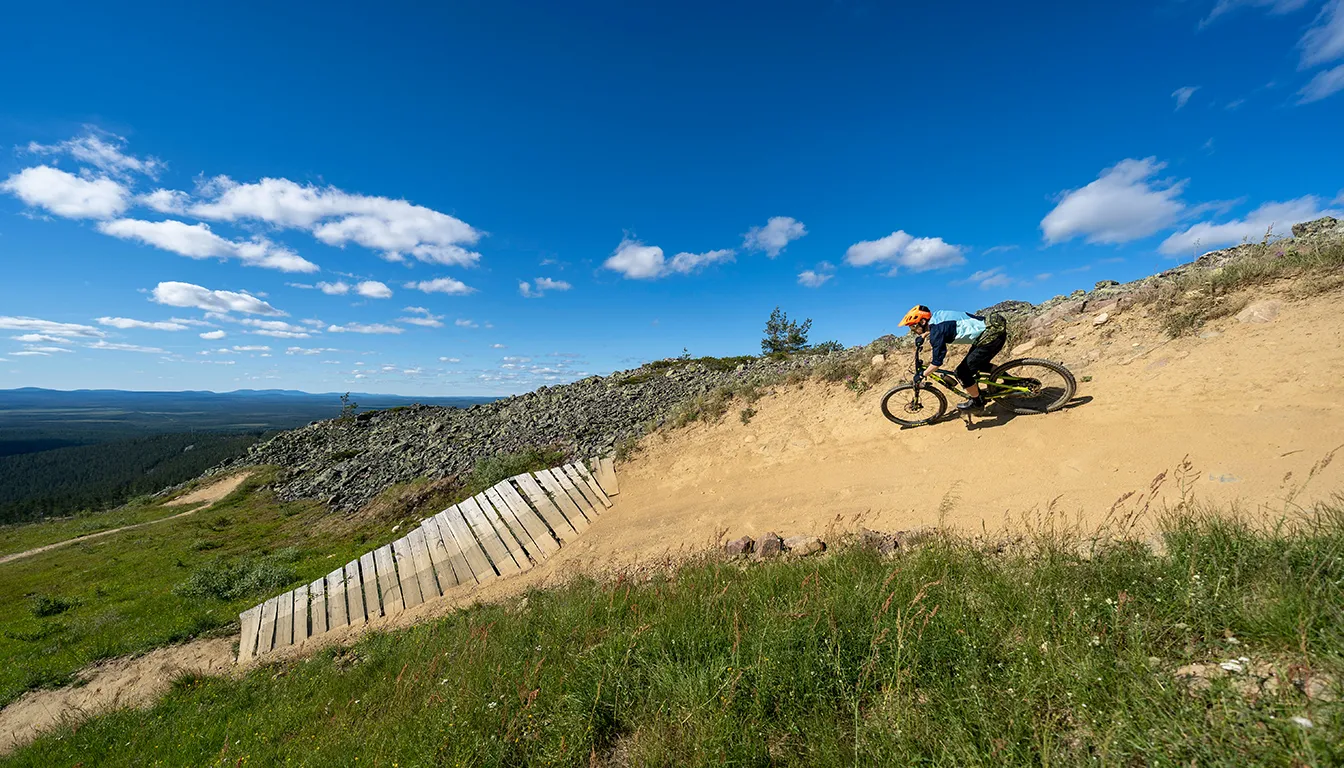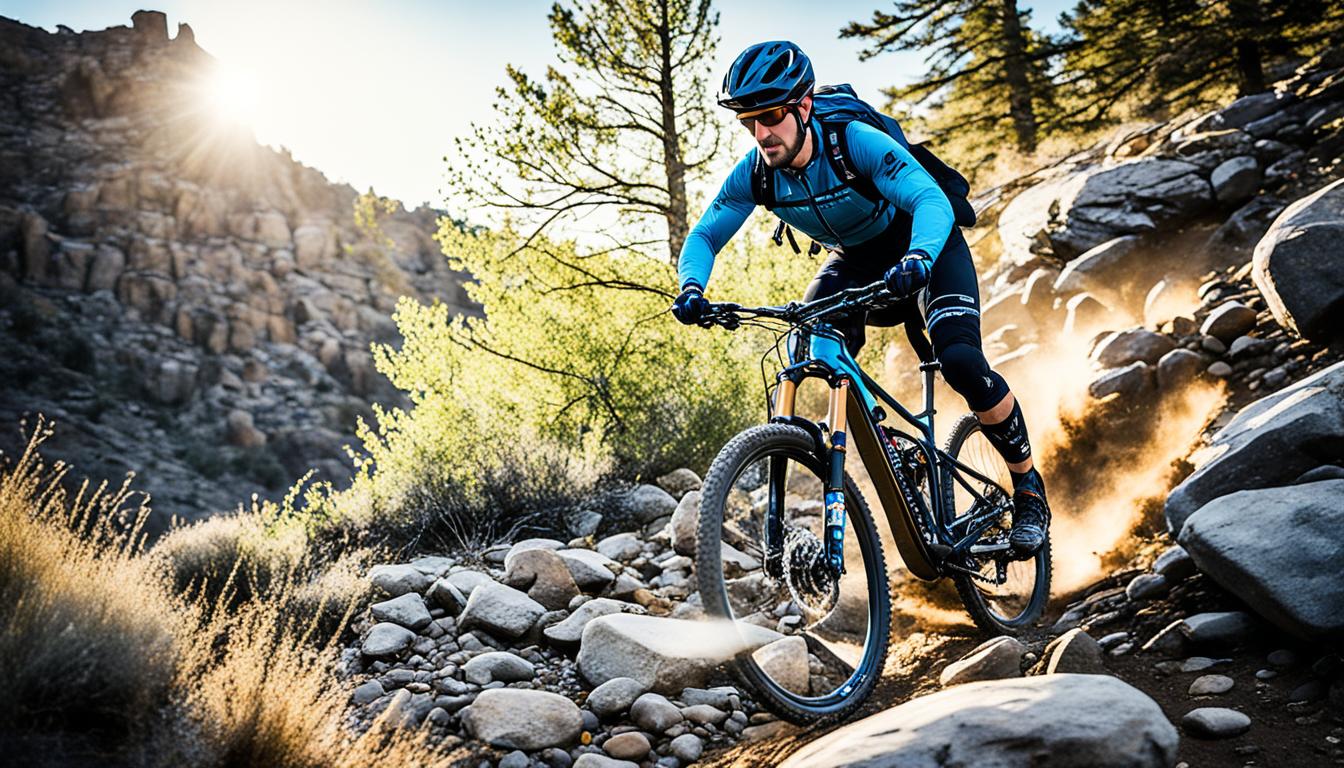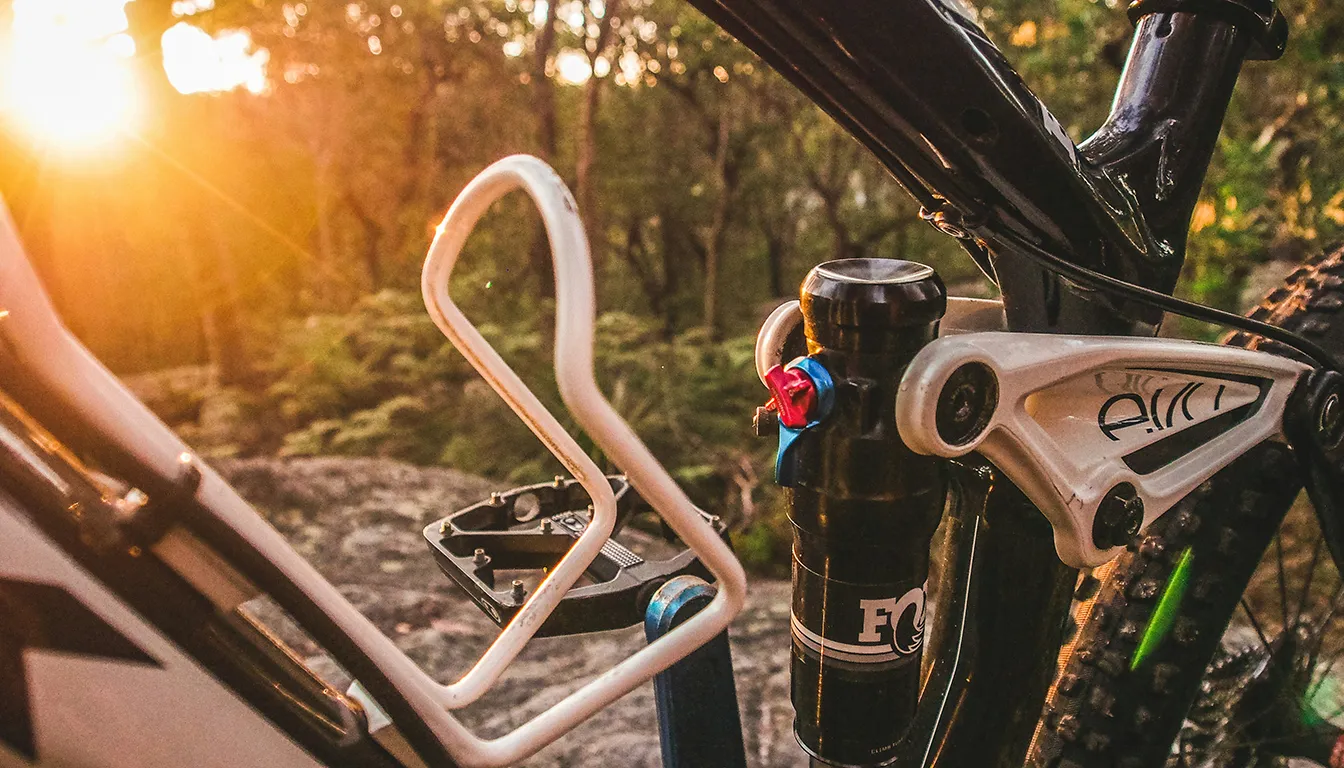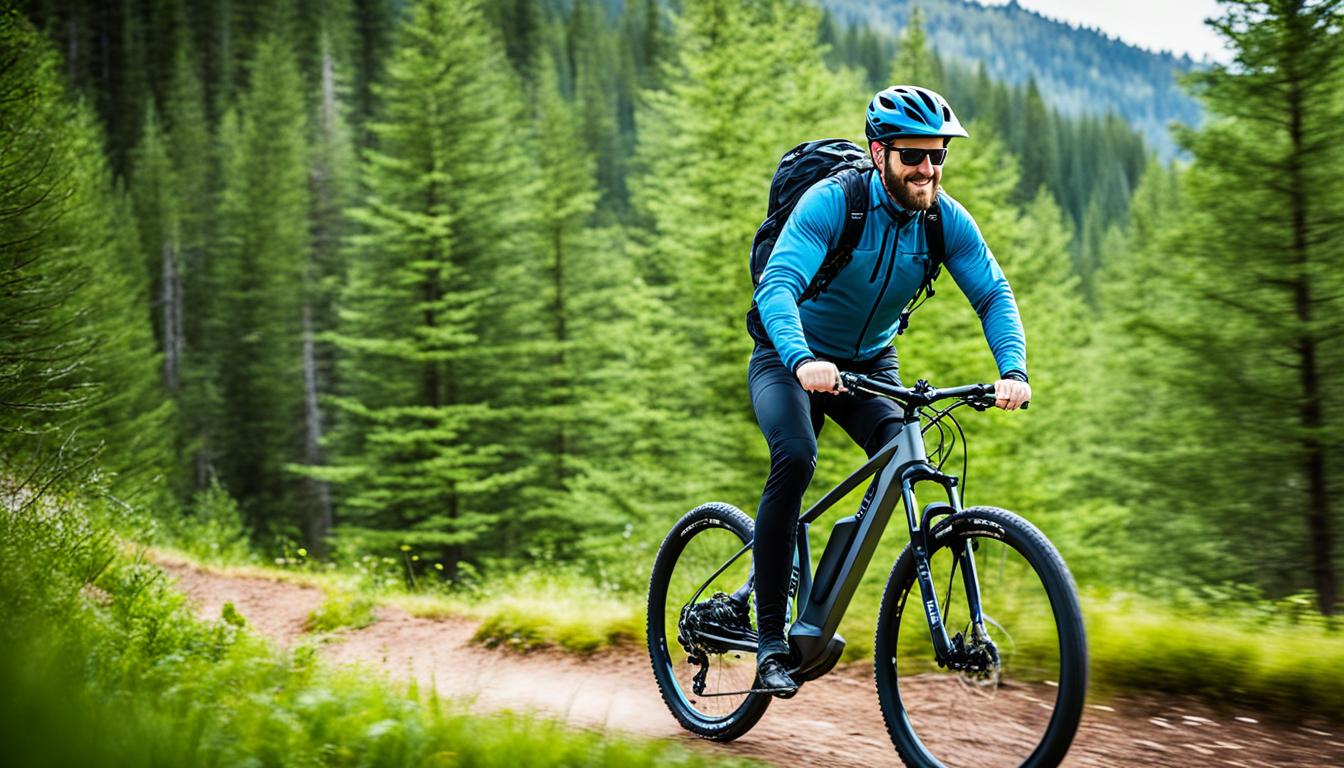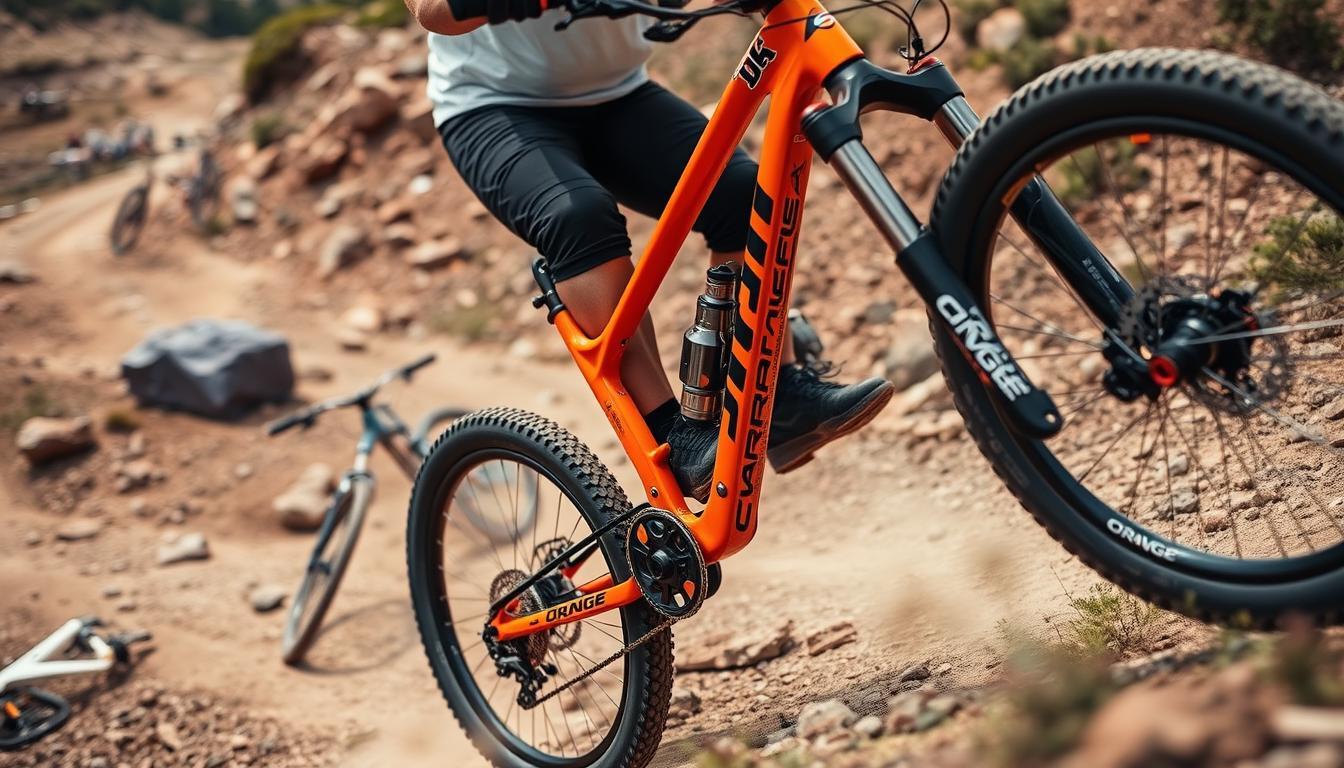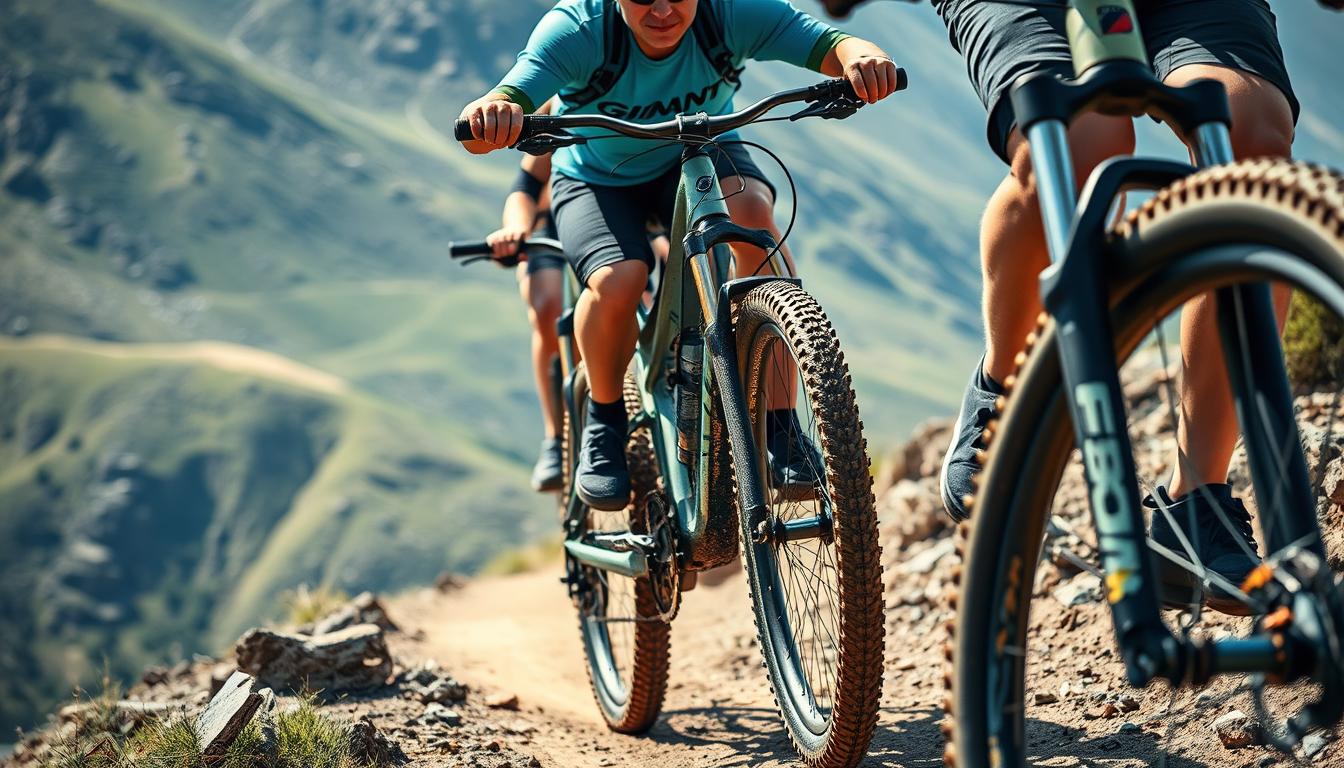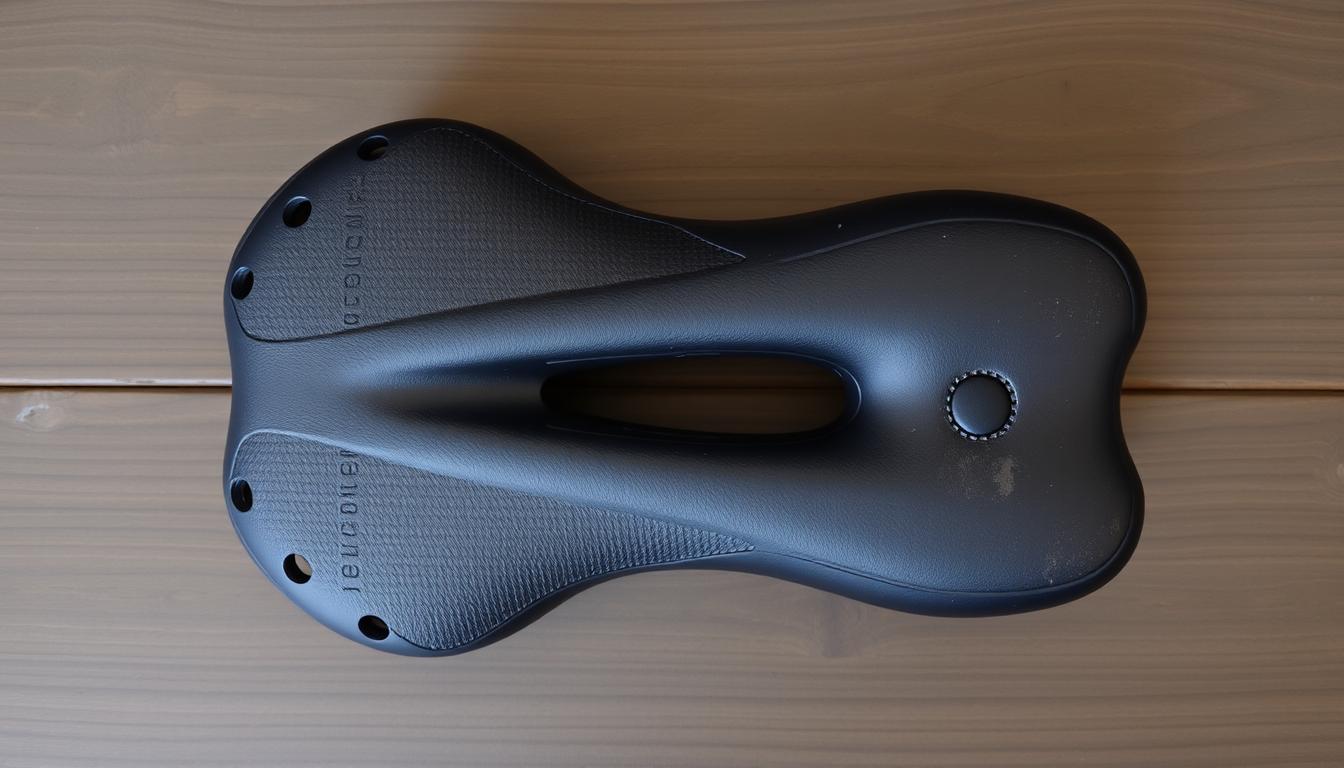Choosing the right helmet is key to mountain biking safely. It’s critical for protecting you on challenging rides. Nowadays, helmets are designed with advanced features for better safety and comfort.
Brands are now using technologies like MIPS. This system helps reduce the impact on your head by letting the helmet move during a crash. It’s a must-have for safety today.
When picking a helmet, balance between protection and comfort is vital. Consider factors like ventilation and weight. They play a big part in making helmets safe. For more safety tips, especially for downhill biking, visit this guide on downhill mountain biking safety.
Introduction to Mountain Bike Helmets
Mountain biking is a thrilling sport, mixing adventure with the beauty of nature. It’s vital for your safety to pick the right mountain bike helmet. These helmets are made for different needs, like downhill, cross-country, and all-mountain biking, each offering unique helmet types.
Modern helmets use advanced helmet technology. They focus on being impact-resistant, light, well-ventilated, and comfortable. The materials and design of these helmets are key to the protection they provide, making it crucial to choose helmets that are up to safety standards.
Wearing a helmet can majorly cut down the risk of getting hurt in an accident. It’s key for keeping your head safe. Yet, it’s not just about safety. The look and functionality matter too when choosing a helmet. High-quality helmets not only keep cyclists safe but also boost their confidence on different trails.
Importance of Safety Features in Mountain Bike Helmets
When picking a mountain bike helmet, focusing on safety features is key. These features offer top protection during your rides. Today’s helmets balance comfort, style, and essential protection, thanks to tech advancements. Key technologies are crucial, enhancing impact protection and boosting rider confidence.
Understanding MIPS Technology
MIPS, or Multi-directional Impact Protection System, is a top innovation. It reduces the force of crashes by letting the helmet slide slightly on impact. This action cuts down the energy hitting the brain. It shows why modern helmets with MIPS are top-notch for safety.
Rotational and Linear Impact Protection Systems
Beyond MIPS, there are systems aimed at protecting from direct hits. These are key for handling forces from straight-on impacts. Mountain biking can lead to various crashes due to uneven paths. Helmet testing is tough, and certifications like CPSC and CE EN1078 show they’re effective in protecting.
Helmets today offer safety alongside better ventilation and strength. It’s wise to invest in a helmet with the latest safety tech. Knowing about helmet tech and safety norms helps riders choose well for their safety. For more insight into helmet technology, visit this source.
Top-Rated Mountain Bike Helmets for Safety
When it comes to mountain biking safety, picking the right helmet is key. In 2024, some helmets stand out for their top safety ratings and performance. Let’s take a look at these impressive helmets and what makes them special.
Fox Speedframe Pro: Best Overall Choice
The Fox Speedframe Pro is the top pick for many. It offers great ventilation, comfort, and protection. It weighs 437g and got a five-star rating from Virginia Tech Bicycle Helmet testing.
It’s made with advanced foam that absorbs impacts well. The fit is adjustable, making it comfy for different head sizes. It’s a great helmet for those who value safety but don’t want to sacrifice performance.
Troy Lee Designs A3: Comfort and Protection
The Troy Lee Designs A3 helmet is known for its comfort. It’s light at 411g, with plush padding that makes long rides easier. It’s a bit less ventilated than others but still a favourite for its comfort and safety.
It comes in various sizes, from XS/S to XL/XXL, ensuring a perfect fit for every rider. It’s an ideal pick for cyclists who prioritize comfort while staying safe.
Smith Convoy MIPS: Best Budget Option
If you’re looking for a helmet that’s easy on the wallet, the Smith Convoy MIPS is a top choice. It includes MIPS technology for extra protection against rotational forces. This helmet is perfect for recreational riders who want quality without spending a lot.
It balances safety and comfort well, making it a wise pick for casual biking. It’s affordable and reliable for everyday adventures.
How to Choose the Right Mountain Bike Helmet
Choosing a mountain bike helmet is important. You need one that protects your head and feels comfortable on long rides. To find the right helmet, consider its fit, size, how well air moves through it, and its weight. Each of these plays a part in how much you enjoy your ride.
Consider Fit and Size
A helmet must fit well for the best safety and comfort. Helmets are sized in centimetres to fit different heads. It should be tight enough to stay on during rides or falls. Most helmets have adjustable straps and dials. These help you make sure the helmet fits your head shape perfectly.
Evaluating Ventilation and Weight
Ventilation matters a lot, especially when it’s hot. A helmet with good airflow keeps you cool. Choose a helmet that balances air flow and safety. This helps avoid getting too hot while cycling. Helmets should also be light, weighing between 350 to 515 grams. If you like cross-country or endurance biking, you might want a lighter helmet. Just make sure it doesn’t compromise your safety for lightness.
Conclusion
When we talk about mountain bike safety, selecting a top-notch helmet is key. A good helmet can reduce head injury risk by up to 88%. Modern helmets with MIPS technology offer better protection by absorbing impacts effectively.
Fitting your helmet correctly is crucial. A helmet that fits well protects you much better in a crash. Studies have found helmets to be equally effective in accidents with cars or other causes. So, it’s important to know about the latest in helmet safety and standards. For more details, check out cycling safety research at reliable sources.
Choosing the right mountain bike helmet is essential, not just for style but for safety. Staying up-to-date with helmet technology can make biking safer and more enjoyable. No matter your biking level, wearing a helmet is a smart move. It greatly reduces injury risk during rides.
FAQ
What should I look for in a mountain bike helmet?
When picking a mountain bike helmet, look at key things such as fit, size, ventilation, weight, and safety features. Ensure the helmet fits well to keep it from moving during a crash. Choose ones with good airflow for comfort, and go for light ones that are still safe.
What is MIPS technology and why is it important?
MIPS stands for Multi-Directional Impact Protection System. It’s a helmet safety feature that lessens the force of angled impacts. This tech lets the helmet slide a bit, which can reduce injury risk during a fall.
Are there budget-friendly options for safe mountain bike helmets?
Indeed, you can find affordable helmets that don’t skimp on safety. For example, the Smith Convoy MIPS is great for casual riders. It’s not pricey and includes MIPS for better protection.
How do I ensure my helmet fits correctly?
To find the right fit, measure around your head and check the helmet brand’s sizing chart. A good helmet should be comfy and stay put when you move your head. Look for helmets with adjustable systems for a perfect fit.
What are the different types of mountain bike helmets?
There are several mountain bike helmet styles for different kinds of riding. This includes trail, cross-country, and all-mountain. Each has special design elements for safety and comfort during those rides.
Is ventilation important in a mountain bike helmet?
Yes, having enough ventilation is key. It helps you stay cool and comfy, especially on hot days or during long rides. Good airflow also keeps safety up to par.
What makes the Fox Speedframe Pro stand out?
The Fox Speedframe Pro is top-rated for its superb airflow, comfort, and Virginia Tech five-star rating. It mixes advanced foam and an adjustable system for unbeatable safety and pleasure.
How do helmet safety ratings work?
Organisations like Virginia Tech do tough tests on helmets to see how well they protect against impacts. Helmets with higher scores passed these tests well. Always check these ratings before you buy a helmet.

